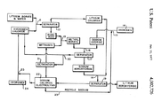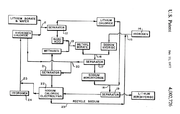
Lithium borohydride
Encyclopedia
Lithium borohydride is a tetrahydroborate and known in organic synthesis
as a reducing agent
for ester
s. Although less common than the related sodium borohydride
, the lithium salt offers some advantages of being highly soluble in ethers and being a stronger reducing agent but still safer to handle than lithium aluminium hydride
.
, and lithium bromide
:
, in that it is a hydride-donating reducing agent in organic synthesis. It is however a stronger reducing agent. Unlike the sodium salt, lithium borohydride reduces esters and amides to the corresponding alcohols and amines.
 Lithium borohydride is renowned as one of the highest energy density
Lithium borohydride is renowned as one of the highest energy density
chemical energy carriers. Although presently of no practical importance, the solid will liberate 65 MJ/kg
heat upon treatment with atmospheric oxygen. Since it has a density of 0.67 g/cm3, oxidation of liquid lithium borohydride gives 43 MJ/L. In comparison, gasoline gives 44 MJ/kg (or 35 MJ/L), while liquid hydrogen gives 120 MJ/kg (or 8.0 MJ/L). The high specific energy density of lithium borohydride has made it an attractive candidate to propose for automobile and rocket fuel, but despite the research and advocacy it has not been used widely. As with all chemical-hydride-based energy carriers, lithium borohydride is very complex to recycle (i.e. recharge) and therefore suffers from a low energy conversion efficiency
. While batteries such as lithium ion carry an energy density of up to 0.72 MJ/kg and 2.0 MJ/L, their DC
to DC conversion efficiency can be as high as 90% . In view of the complexity of recycling mechanisms for metal hydrides, such high energy conversion efficiencies are beyond practical reach.
Organic synthesis
Organic synthesis is a special branch of chemical synthesis and is concerned with the construction of organic compounds via organic reactions. Organic molecules can often contain a higher level of complexity compared to purely inorganic compounds, so the synthesis of organic compounds has...
as a reducing agent
Reducing agent
A reducing agent is the element or compound in a reduction-oxidation reaction that donates an electron to another species; however, since the reducer loses an electron we say it is "oxidized"...
for ester
Ester
Esters are chemical compounds derived by reacting an oxoacid with a hydroxyl compound such as an alcohol or phenol. Esters are usually derived from an inorganic acid or organic acid in which at least one -OH group is replaced by an -O-alkyl group, and most commonly from carboxylic acids and...
s. Although less common than the related sodium borohydride
Sodium borohydride
Sodium borohydride, also known as sodium tetrahydridoborate, is an inorganic compound with the formula NaBH4. This white solid, usually encountered as a powder, is a versatile reducing agent that finds wide application in chemistry, both in the laboratory and on a technical scale. Large amounts are...
, the lithium salt offers some advantages of being highly soluble in ethers and being a stronger reducing agent but still safer to handle than lithium aluminium hydride
Lithium aluminium hydride
Lithium aluminium hydride, commonly abbreviated to LAH or known as LithAl, is an inorganic compound with the chemical formula LiAlH4. It was discovered by Finholt, Bond and Schlesinger in 1947. This compound is used as a reducing agent in organic synthesis, especially for the reduction of esters,...
.
Preparation
Lithium borohydride may be prepared by the metathesis reaction, which occurs upon ball-milling the more commonly available sodium borohydrideSodium borohydride
Sodium borohydride, also known as sodium tetrahydridoborate, is an inorganic compound with the formula NaBH4. This white solid, usually encountered as a powder, is a versatile reducing agent that finds wide application in chemistry, both in the laboratory and on a technical scale. Large amounts are...
, and lithium bromide
Lithium bromide
Lithium bromide, or LiBr, is a chemical compound of lithium and bromine. Its extreme hygroscopic character makes LiBr useful as a desiccant in certain air conditioning systems.-Production and properties:...
:
- NaBH4 + LiBr → NaBr + LiBH4
Reactions
Lithium borohydride reacts largely like sodium borohydrideSodium borohydride
Sodium borohydride, also known as sodium tetrahydridoborate, is an inorganic compound with the formula NaBH4. This white solid, usually encountered as a powder, is a versatile reducing agent that finds wide application in chemistry, both in the laboratory and on a technical scale. Large amounts are...
, in that it is a hydride-donating reducing agent in organic synthesis. It is however a stronger reducing agent. Unlike the sodium salt, lithium borohydride reduces esters and amides to the corresponding alcohols and amines.
Energy storage

Energy density
Energy density is a term used for the amount of energy stored in a given system or region of space per unit volume. Often only the useful or extractable energy is quantified, which is to say that chemically inaccessible energy such as rest mass energy is ignored...
chemical energy carriers. Although presently of no practical importance, the solid will liberate 65 MJ/kg
MJ/kg
MJ/kg may refer to:* megajoules per kilogram* Specific kinetic energy* Heat of fusion* Heat of combustion...
heat upon treatment with atmospheric oxygen. Since it has a density of 0.67 g/cm3, oxidation of liquid lithium borohydride gives 43 MJ/L. In comparison, gasoline gives 44 MJ/kg (or 35 MJ/L), while liquid hydrogen gives 120 MJ/kg (or 8.0 MJ/L). The high specific energy density of lithium borohydride has made it an attractive candidate to propose for automobile and rocket fuel, but despite the research and advocacy it has not been used widely. As with all chemical-hydride-based energy carriers, lithium borohydride is very complex to recycle (i.e. recharge) and therefore suffers from a low energy conversion efficiency
Energy conversion efficiency
Energy conversion efficiency is the ratio between the useful output of an energy conversion machine and the input, in energy terms. The useful output may be electric power, mechanical work, or heat.-Overview:...
. While batteries such as lithium ion carry an energy density of up to 0.72 MJ/kg and 2.0 MJ/L, their DC
Direct current
Direct current is the unidirectional flow of electric charge. Direct current is produced by such sources as batteries, thermocouples, solar cells, and commutator-type electric machines of the dynamo type. Direct current may flow in a conductor such as a wire, but can also flow through...
to DC conversion efficiency can be as high as 90% . In view of the complexity of recycling mechanisms for metal hydrides, such high energy conversion efficiencies are beyond practical reach.
| Substance | Specific energy Specific energy Specific energy is defined as the energy per unit mass. Common metric units are J/kg. It is an intensive property. Contrast this with energy, which is an extensive property. There are two main types of specific energy: potential energy and specific kinetic energy. Others are the gray and sievert,... MJ/kg MJ/kg MJ/kg may refer to:* megajoules per kilogram* Specific kinetic energy* Heat of fusion* Heat of combustion... | Density Density The mass density or density of a material is defined as its mass per unit volume. The symbol most often used for density is ρ . In some cases , density is also defined as its weight per unit volume; although, this quantity is more properly called specific weight... g/cm3 | Energy density Energy density Energy density is a term used for the amount of energy stored in a given system or region of space per unit volume. Often only the useful or extractable energy is quantified, which is to say that chemically inaccessible energy such as rest mass energy is ignored... MJ/L |
|---|---|---|---|
| LiBH4 | 65.2 | 0.666 | 43.4 |
| Regular Gasoline Gasoline Gasoline , or petrol , is a toxic, translucent, petroleum-derived liquid that is primarily used as a fuel in internal combustion engines. It consists mostly of organic compounds obtained by the fractional distillation of petroleum, enhanced with a variety of additives. Some gasolines also contain... |
44 | 0.72 | 34.8 |
| Liquid Hydrogen Liquid hydrogen Liquid hydrogen is the liquid state of the element hydrogen. Hydrogen is found naturally in the molecular H2 form.To exist as a liquid, H2 must be pressurized above and cooled below hydrogen's Critical point. However, for hydrogen to be in a full liquid state without boiling off, it needs to be... |
120 | 0.0708 | 8 |
| lithium ion battery Lithium ion battery A lithium-ion battery is a family of rechargeable battery types in which lithium ions move from the negative electrode to the positive electrode during discharge, and back when charging. Chemistry, performance, cost, and safety characteristics vary across LIB types... |
0.72 | 2.8 | 2 |
See also
- Lithium aluminium hydrideLithium aluminium hydrideLithium aluminium hydride, commonly abbreviated to LAH or known as LithAl, is an inorganic compound with the chemical formula LiAlH4. It was discovered by Finholt, Bond and Schlesinger in 1947. This compound is used as a reducing agent in organic synthesis, especially for the reduction of esters,...
- Sodium borohydrideSodium borohydrideSodium borohydride, also known as sodium tetrahydridoborate, is an inorganic compound with the formula NaBH4. This white solid, usually encountered as a powder, is a versatile reducing agent that finds wide application in chemistry, both in the laboratory and on a technical scale. Large amounts are...
- Direct borohydride fuel cellDirect borohydride fuel cellDirect borohydride fuel cells are a subcategory of alkaline fuel cells which are directly fed by sodium borohydride or potassium borohydride as a fuel and either air/oxygen or hydrogen peroxide as the oxidant...

